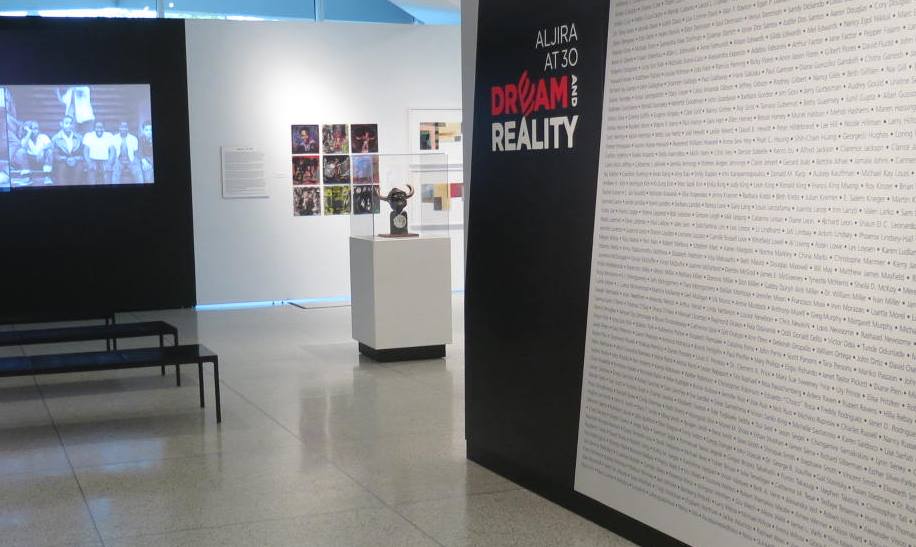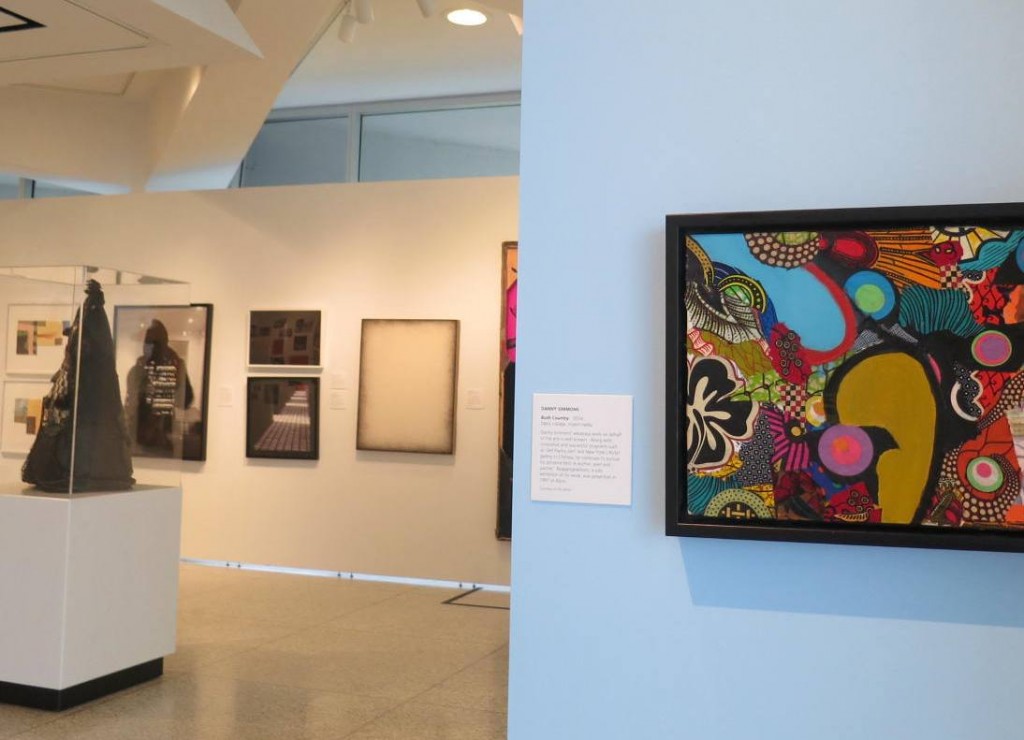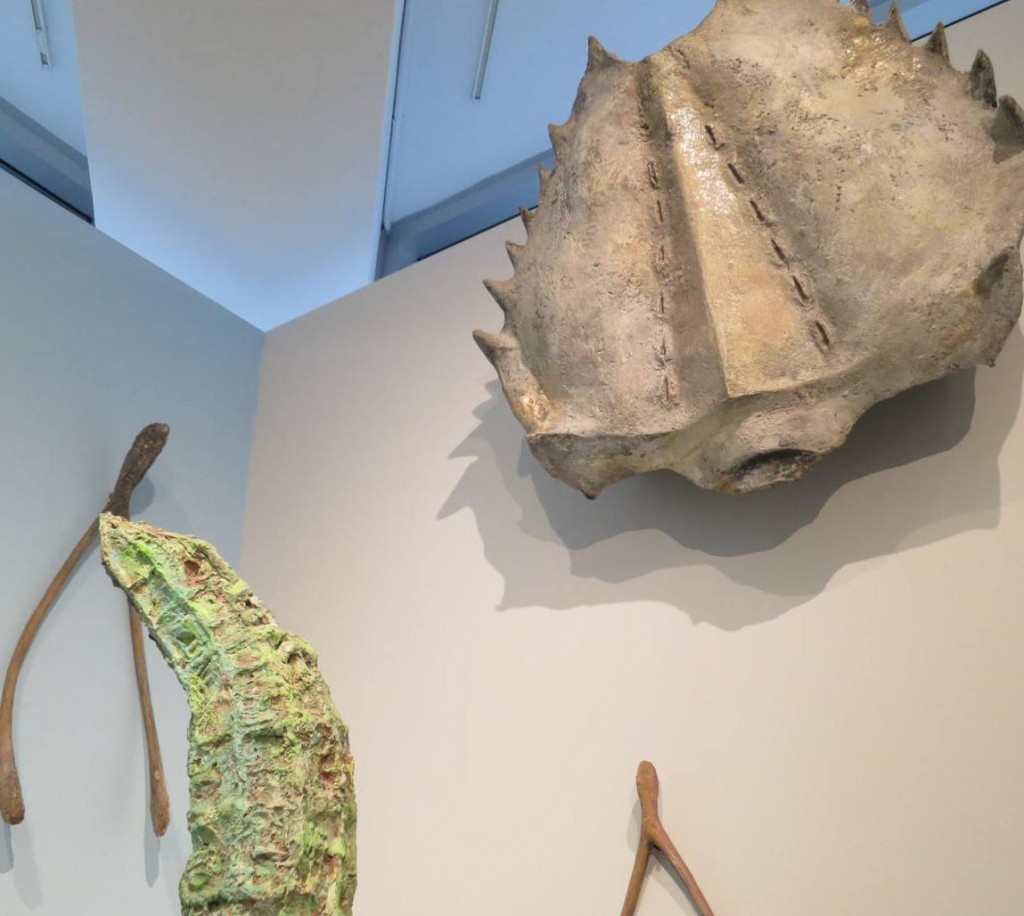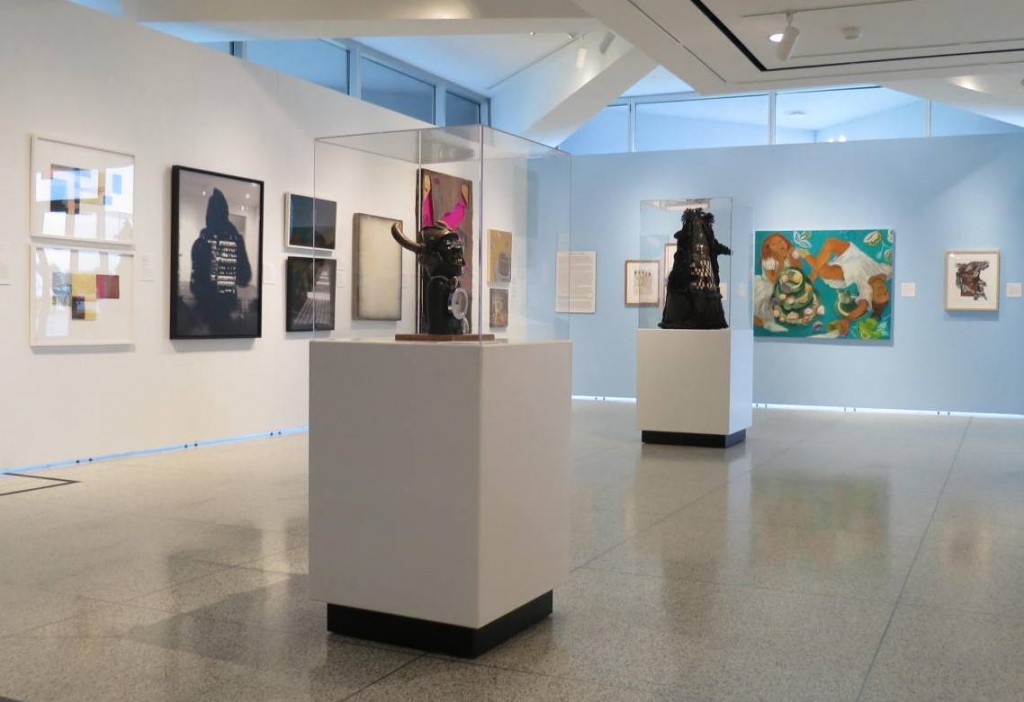30 years of Aljira chronicled at the State Museum

The New Jersey State Museum in Trenton is full of treasures – Civil War relics, dinosaur skeletons, Native American artifacts, and fine art. That’s right, fine art. The Museum has a vast collection of more than 12,000 paintings, prints, drawings, sculpture and photographs, with a focus on New Jersey artists and works that depict New Jersey events and scenes.

Now through September 28th (don’t delay!), the Museum is presenting "Aljira at 30: Dream and Reality," an exhibitionthat chronicles the rich history of Aljira, a unique organization established by a core of artists seeking an affordable place to create in Newark, NJ.
The exhibition was put together by Margaret O’Reilly, Curator of Fine Art, New Jersey State Museum, together with Carl E. Hazlewood, artist, writer, independent curator and co-founder of Aljira; Jaret Vadera, Artist and Cultural Producer; and Cicely Cottingham, Artist and Co-Founder, Aljira Design.
When I asked her how the idea for this exhibition came about, O’Reilly explained the deeply-rooted connection between the Museum and Aljira.
“Aljira has consistently shown emerging and underrepresented artists, and the Museum has used them as a resource to discover new art.” she said. “Now we are purchasing from their art auction for our collection.”

The idea for the exhibition emerged after the auction about three years ago. “I mentioned to a colleague (Friends of the Museum Executive Director, Nicole Jannotte) that Aljira was coming up on its 30th year,” she said. “Nicole told me the Museum needed to do something with them.”
So, O’Reilly, together with co-curators Hazelwood, Cottingham and Vadera, set out to assemble art and ephemera to tell the story of Aljira’s first thirty years.
“Aljira has been so important to somany people,” O’Reilly said, “and many people know very little about it.”
Around the gallery perimeter is art from Aljira’s collection, or works lent by artists who have been part of the organization. Each section represents a decade and includes detailed wall text for added context. The interior spaces include a reading area and displays of publications, event posters and invitations, and other materials that visually convey the breadth of Aljira.

“Our objective was to represent the totality of Aljira,” O’Reilly said. “The story is bigger than the art. It’s about the organization.” And, she told me, visitors are responding. “They seem to be getting a good sense of what Aljira is about,” she said.
And what IS Aljira about?
Carl Hazelwood, co-founder with Victor L. Davson, remembers well what the two had in mind at the beginning.
“We wanted just two things in the beginning,” said Hazelwood. “We wanted to have good art there, and we wanted to represent people in the Newark community – young, old, women, multicultural – who weren’t getting a fair shake.”
“We believe that art is something people NEED to do,” he continued, “and we wanted to provide some of what people in the community, and other places, needed to make art.”
This assistance has taken many forms. Aljira Emerge is a professional development program for emerging artists; Bending the Grid is a series of exhibitions devoted to artists over 60; and Culture Creators provides an opportunity for teens to build important social and professional skills and to experience firsthand what it would be like to have a career in the arts.
Cicely Cottingham, a painter and co-curator of the exhibition, got involved with Aljira when she was part of the group’s second exhibition in 1984. Later, she was a graphic designer, “It was one of my gigs,” she said. “And in 1987 I began doing all of Aljira’s design work.”

This venture grew into a commercial enterprise and, in 1991, Aljira Design “quietly put out a shingle.”
The group applied for and received grants from the Geraldine R. Dodge Arts Challenge Fund and the State Council for the Arts, and others. And in its heyday, Aljira Design had its own small staff, a working studio within the Aljira space, and was responsible for 40% of the group’s funding.
Although the studio closed in 2009, due largely to the economic downturn, Cottingham has only positive feelings about Aljira Design. “It was a very successful and rewarding project,” she said.
Cottingham continues to oversee all materials that come out of Aljira and manages the art auction, Aljira’s main fundraising event. She is also “keeper of the archives” and her contribution is central to the exhibition.
Assembling the printed materials was a challenging—but rewarding—task for Cottingham. She waded through box after box in storage and then spread out what she selected by decade on tables in Aljira’s gallery. “They took up a lot of space,” she said.

After Hazelwood and Vadera reviewed what was there and made their edits, Cottingham got O’Reilly involved.
“Margaret knows her audience,” Cottingham said. “Her focus was two-fold – to tell the story to people who don’t know about Aljira and to also make the exhibition visually compelling.”
Cottingham believes that the exhibition achieves these objectives. And the process was personally enriching as well. “Looking back reaffirmed for me that Aljira has accomplished so much in 30 years,” she said. “It was a very moving experience.”
Vadera came to Aljira as part of Emerge. “Emerge is an invaluable resource,” said Vadera. “There are 20 artists in each group, and the leaders help you learn to speak about your work, how to write an artist statement and compile your CV, that kind of thing.”
“Artists are not that adept at talking about what they do.”
Vadera’s work on the exhibition was fairly specific. “I was most useful in things related to the last decade,” he said. He also helped put together the Wall of Names that greets visitors at the entrance to the exhibition. “It is amazing to realize how many people have been a part of Aljira – artists, curators, volunteers, supporters – over those three decades.”
“Putting together the exhibition required a constant dialogue,” Vadera said. “We all agreed that we easily could have done ten exhibitions.”
The other issue was this exhibition was not about just history, as in something in the past, but, as Vadera said, was “a living archival statement about a place that is still functioning.”
Regardless of the challenges, all of the curators feel that the exhibition succeeds on all levels.
“I think it communicates the road we traveled, how we moved from one decade to the next, and the achievements we’ve had along the way,” said Hazelwood.
And it also provides a glimpse of Aljira’s future.
“We have placed things within the context of time – the past, the present, and now the possibilities of the future.”
O’Reilly agrees completely. In addition to recounting its history and creating exposure for Aljira, the exhibition is having another significant impact. “The show is bringing in artists who haven’t visited our galleries before,” said O’Reilly.
“New Jersey has a large and very active arts community,” she continued, “and its artists have a strong sense of pride about where they are from and what they do.”
“At one time, we were considered to be in the shadow of New York or Philadelphia,” she said. “But that is no longer true.”


